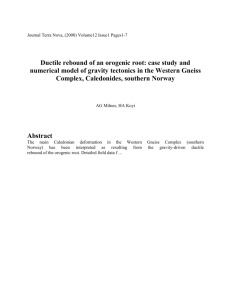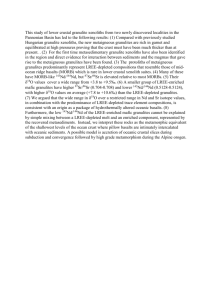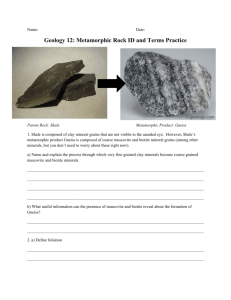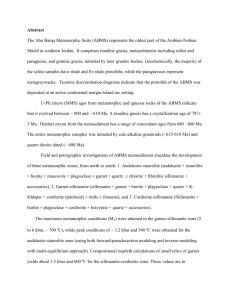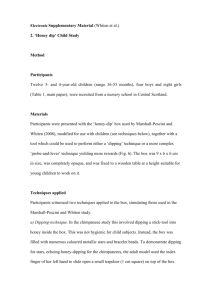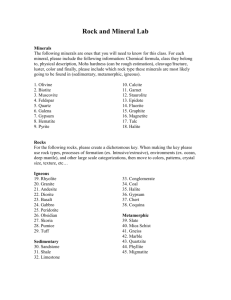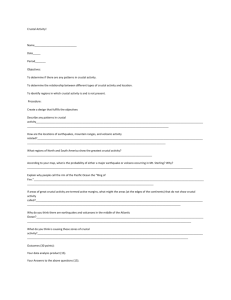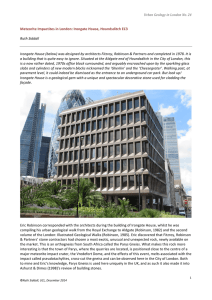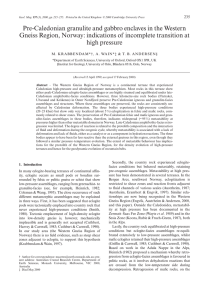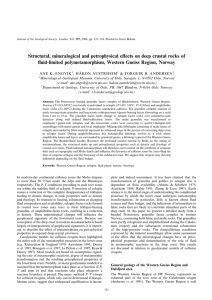Structure and Episodic Tectonic Evolution of the Lower Crustal
advertisement
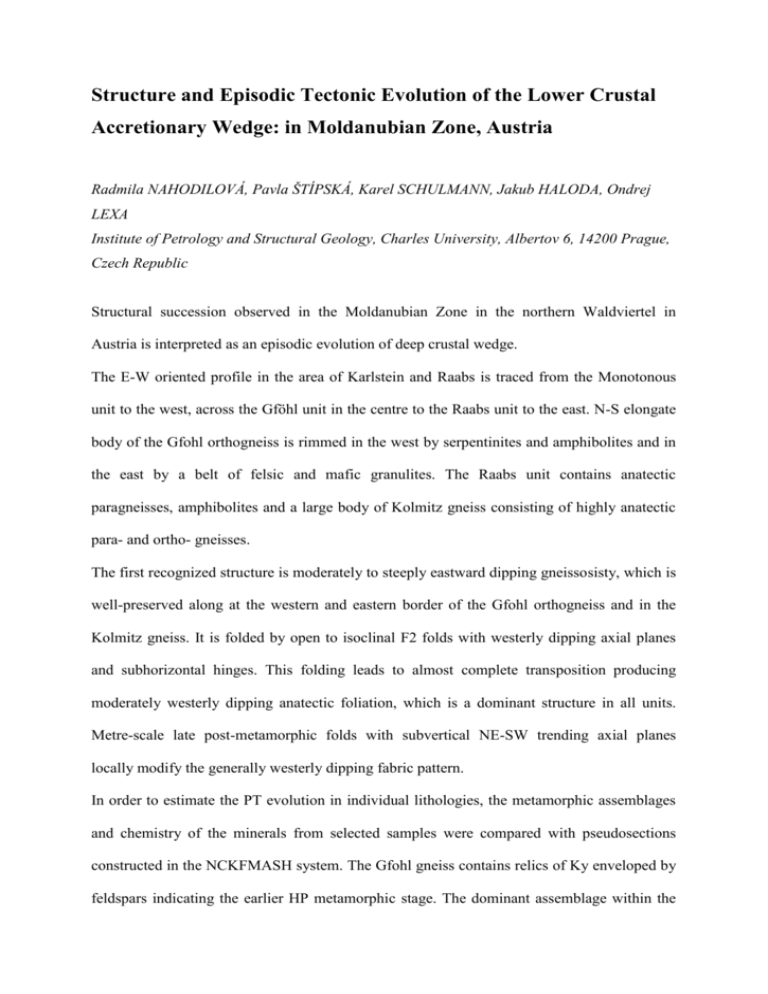
Structure and Episodic Tectonic Evolution of the Lower Crustal Accretionary Wedge: in Moldanubian Zone, Austria Radmila NAHODILOVÁ, Pavla ŠTÍPSKÁ, Karel SCHULMANN, Jakub HALODA, Ondrej LEXA Institute of Petrology and Structural Geology, Charles University, Albertov 6, 14200 Prague, Czech Republic Structural succession observed in the Moldanubian Zone in the northern Waldviertel in Austria is interpreted as an episodic evolution of deep crustal wedge. The E-W oriented profile in the area of Karlstein and Raabs is traced from the Monotonous unit to the west, across the Gföhl unit in the centre to the Raabs unit to the east. N-S elongate body of the Gfohl orthogneiss is rimmed in the west by serpentinites and amphibolites and in the east by a belt of felsic and mafic granulites. The Raabs unit contains anatectic paragneisses, amphibolites and a large body of Kolmitz gneiss consisting of highly anatectic para- and ortho- gneisses. The first recognized structure is moderately to steeply eastward dipping gneissosisty, which is well-preserved along at the western and eastern border of the Gfohl orthogneiss and in the Kolmitz gneiss. It is folded by open to isoclinal F2 folds with westerly dipping axial planes and subhorizontal hinges. This folding leads to almost complete transposition producing moderately westerly dipping anatectic foliation, which is a dominant structure in all units. Metre-scale late post-metamorphic folds with subvertical NE-SW trending axial planes locally modify the generally westerly dipping fabric pattern. In order to estimate the PT evolution in individual lithologies, the metamorphic assemblages and chemistry of the minerals from selected samples were compared with pseudosections constructed in the NCKFMASH system. The Gfohl gneiss contains relics of Ky enveloped by feldspars indicating the earlier HP metamorphic stage. The dominant assemblage within the S2 foliation is Sill-Grt-Plg-Kfs-Bt determining conditions of the metamorphic overprint at 810kbar and 850°C. Similar evolution is documented in the Kolmitz gneiss where abundant relics of Ky within feldspars were found in both the gneiss and in the coarse-grained melts. The dominant assemblage is identical to that of the Gfohl gneiss thus indicating the same conditions of D2 reworking at 8-10kbar and 850°C. The serpentinites at the western border of the Gfohl gneiss mark the first west-vergent thrust of the Gfohl unit over the Monotonous unit, while the Ky-Kfs felsic granulites and Cpx-Grt mafic granulites along the eastern border of the Gfohl gneiss mark the second east-vergent HP thrust of the Gfohl orthogneiss over the Raabs unit. The development of spinel in the Ky-Kfs granulites and Opx-Plg in mafic granulites along the eastern border of the Gfohl gneiss indicate, that thrusting continued to shallow depths at still high temperature. The observed structural pattern is interpreted in terms of episodic evolution of lower crustal accretionary wedge. The Monotonous series is seen as more rigid indenting continental crust causing the west-vergent thrusting and exhumation of the deepest part of the lower crust and upper mantle represented by the western margin of the Gfohl unit. Almost complete reworking of earlier east-vergent fabric by moderately westerly dipping foliations and initiation of east-vergent HP thrust located at the eastern border of the Gfohl orthogneiss is interpreted to have been caused by underthrusting of the Brunovistulian foreland further to the east. The exhumation of the rocks along east-vergent fabric continues from ca10kbars to ca 6kbars at still high temperature. Local reworking of both fabrics by steep NE-SW trending folds indicate continuous compression at shallow crustal levels, while the extruding steep or intermediate dipping fabrics are locally affected by flat shear zones accommodating the gravitational collapse of the whole wedge structure.
